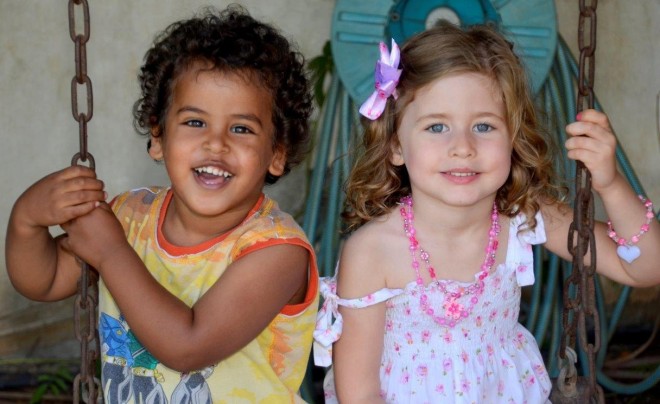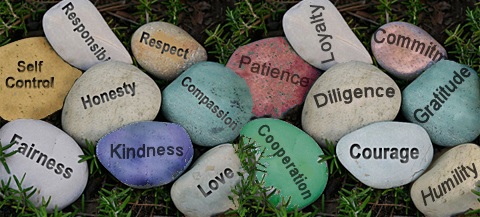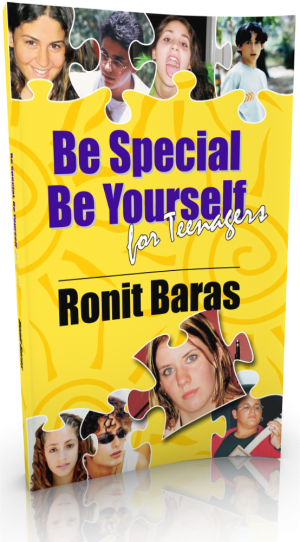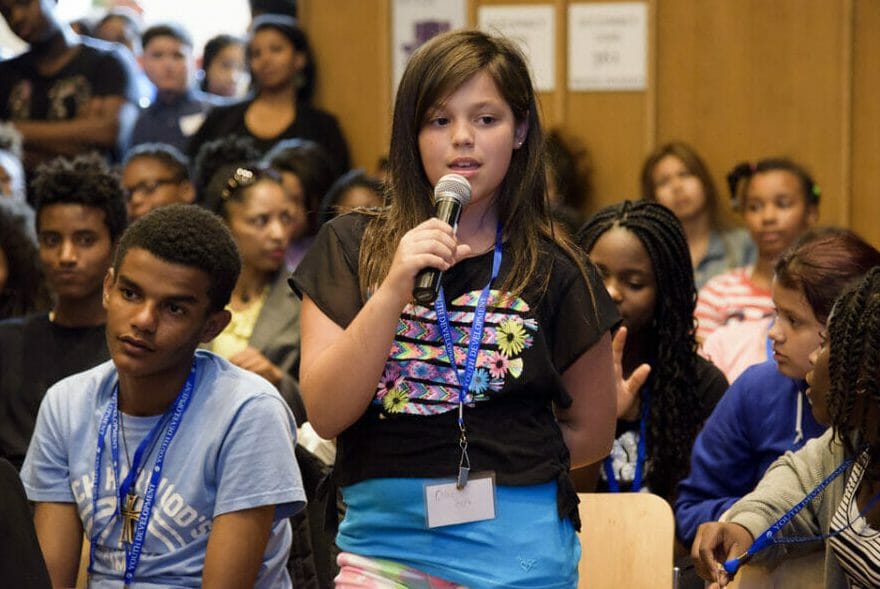
If our children are like a garden, we the parents are the gardeners. If you have a garden at home, you know that when you take care of your garden, it looks beautiful and has lots of flowers and grows healthy nutritious fruits. If you neglect your garden or worse, water it with weed killer, no flowers or fruits will grow.
Our kids are the same. If kids are the garden, and kids’ personality traits are the plants, we need to water them with great love and care and remember that their early years are critical.
Think about it this way: if wanted to have a big plant of tomatoes, you would water it with water and use fertilizer that that supports healthy tomato growth. It is the same with kids and their traits. If you wanted your child to grow kindness like you would grow a tomato, you need to water with support, not a weed killer, to help it grow. It’s a simple rule and a simple process.
One thing people are often uncomfortable about is saying their child’s personality has “traits”. If you are not 100% comfortable with calling it traits, call it a behavior that is constant or that appears more often than not. I, for example, am not 100% comfortable calling it a trait.
That is because I don’t believe a child who is being stubborn on several occasion means that they are stubborn as a personality trait. It is a behavior he/she has learned in some way. If we learn it, we can always un-learn it, or learn a new or opposite trait. This time, I cannot say the process of un-learning is simple. It is definitely possible, but not always easy and simple.
If you have read the previous chapter, you probably found some of your “weed killers” there. Do not despair, I did to! When we are stressed and under pressure (physical, emotional or perceived) we move into survival mode. Our brains pull their resources to manage the stress and we cannot think clearly about the things we are saying and the possible outcome.
The problem is that our kids record the sentences we say to them. They have a mechanism that counts how many times they heard it something. Research shows that when we hear something 3 times, especially from people who are dear to us, we tend to consider it as the ultimate truth. Kids are no different, they are just more trusting.
Exercise #1: Awareness is king

Follow the instructions below to begin recognizing and changing your kids’ personality traits. Below the instructions is a list of weeds/bad traits/bad behaviors that I collected from all the parents in my parenting workshops. I have arranged them in alphabetical order for your convenience. Use the list to compete the exercise below.
- Print a copy of the list of traits for each member of your family (kids and parents). Make sure the kids understand the meaning of the traits. If they don’t some, don’t try to explain them, just erase them from their lists. No one can consider whether they have a trait until they really understand the meaning of it.
- Every member of the family should highlight the traits they think they have from the list.
- The parents then highlight or mark in a different way, the traits that other family members have. Make sure to have different mark for each person in the family. For example: My traits are marked in yellow, my husband’s are in red, my eldest daughter’s are underlined, my son’s traits are green and my youngest daughter has a smile next to hers). Ask each person to choose one of the traits they think they have and explain why they think they have it. It will help you understand the sentences/words/phrases that gave birth to such bad traits. It might help you notice the conversation that happen at your house that influence the way your children see the world. Bad traits never grow for no reason. If you find that you have a similar trait on your own list, share it. Be honest and tell your kid that you think you have that trait as well. It requires courage and this courage will give you extra parenting authority for being honest and reflective. For example: my daughter thinks she is stubborn and I look at my list and I think that I am stubborn as well. I need to tell her that I can understand where she got it from as I think I am stubborn too. I need to fix my traits and she can fix hers at the same time.
- Share the traits you have and why you think you have them. Be honest and transparent. If you can’t do it with the kids, do it with a partner or a mature child, sibling or a good friend. If you choose to do it on your own, write it down.
- Then ask, “When was the first time you remember thinking you were jealous?” Ask this question for each trait you think you have. Our beliefs are formed at a very early stage of life. We call them the “first events”. Something happened back then, something our parents or people who were close to us said, and it carved a seed of poison that just keeps growing. You might be surprised how long certain beliefs have been held
- Ask them (and yourself), “Who was responsible for this trait?
- Do not be judgmental. It is not a competition. Do not feel insulated (well, it is hard not to feel insulted but try not to show it). It can be sad and alarming to find out some of the things you passed on to your children. You cannot change the past. You did the best you could at the time. Use it as an opportunity to make changes for the future. Remember, it is better to know you are doing it and make a change rather than continuing to kill the beautiful trait-plants you so care about. When my kids say things like that to me, I say “Thank you” (well, first I get shocked, and then I say “thank you”). I realize that it gives me the power to make a change. I say “ooops” and change to using tomato fertilizer.
- Do not try to change your child’s perception. Do not argue with your child and try to convince them that they don’t have those traits. If they think they have it, they have it! Don’t say things like, “I didn’t mean it” or, “that is not what I said”, “I never said anything like that”. You will only be encouraging more bad traits (not trustworthy, not good enough, can’t understand anything). Start with the traits you were responsible for and do not try to blame anyone else for it. It is very common for parents to start blaming each other for those negative traits but it is not useful. Children are the most unique creatures, and sometimes they come to conclusions based on a logic that is totally different from that of an adult. Everything they say is their perception based on things that happened to them life. Sometimes, a small thing you said will instill a belief that and it won’t help if you explain why you said it. Take the information on board and reflect on it. Do not defend yourself, explain why you said it or justify yourself. Say “Thank you for being honest (which is also a great way to water honesty). I need to think how to change that”. Remember this for the exercise in the next post.
Kids’ Personality Traits
- Letter A: Abrupt, Agonizing, Aimless, Aloof, Angry, Anxious, Apathetic, Argumentative, Arrogant
- Letter B: Brutal, Boring,Bossy, Bitchy, Boastful
- Letter C: Careless, Childish, Clumsy, Compulsive, Conformist, Confused, Conventional, Crazy, Criminal, Critical, Cruel, Cynical, Clingy
- Letter D:Demanding, Dependent, Desperate, Destructive,Difficult, Dirty, Dishonest, Disorganized, Disrespectful, Disruptive, Disturbing, Dogmatic, Domineering
- Letter E: Easily Discouraged
- Letter F: Fearful, Fussy, Foolish, Forgetful
- Letter G: Gullible, Greedy, Grumpy
- Letter H: Hesitant, Hostile
- Letter I: Ignorant, Impatient, Impulsive, Impatience, Inflexible, Inconsiderate, Indecisive, Indulgent, Inhibited, Insecure, Insensitive, Insulting, Intolerant, Irrational, Irresponsible, Irritable
- Letter J: Jealous, Judgemental
- Letter L: Lazy
- Letter M: Mannerless, Messy, Mean, Materialistic, Miserable, Monstrous, Moody
- Letter N: Naive, Narcissistic, Narrow-minded, Negative, Neurotic, Nervous
- Letter O: Obnoxious, Obsessive, Odd, Opinionated
- Letter P: Paranoid, Passive, Possessive, Power-hungry, Prejudiced, Procrastinating
- Letter R: Resentful, Rude, Resentful, Ridiculous, Rigid
- Letter S: Sarcastic, Sadistic, Selfish, Shallow, Shortsighted, Shy, Silly, Single-minded, Sloppy, Stubborn, Slow, Stupid, Suspicious
- Letter T: Tactless, Tense, Timid, Transparent
- Letter U: Unappreciative, Uncooperative, Ungrateful, Unreliable, Unstable
- Letter V: Vague, Vulnerable
- Letter W: Weak
If we want to change bad personality traits into good ones, we need to focus on developing the good personality traits by watering them with nutritious support. When they get enough water and sun and air, they will not leave space for the bad traits to grow. It is a question of numbers, which one will you feed more, the good traits or the bad ones?
Join me next time for the final exercise about promoting the good healthy traits.
Happy gardening,
Ronit
This post is part of the series Helping Kids Build Character:
- Helping Kids Build Healthy and Powerful Character Traits
- Healthy and Powerful Character Traits for Children (A to G)
- Developing Good Character Traits for Children: H to Z
- Positive Character Traits for Children: Watering with Weed Killer
- How to Destroy Good Character Traits for Children: A to F
- How to Destroy Good Character Traits in Children: G-Z
- Kids’ Personality Traits: How to Change Them with Awareness
- Character Traits: Swapping the Bad for the Good











